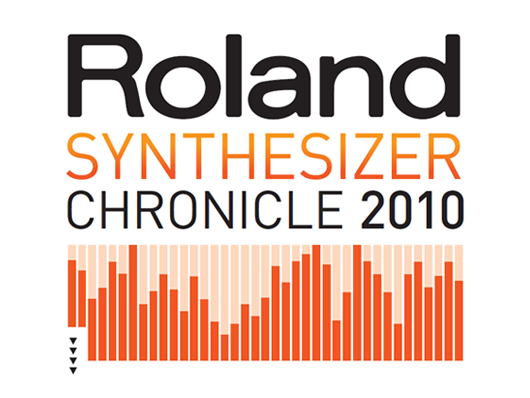
89 not out
When we saw that our friends at Roland were giving away the Synthesizer Chronicle 2010 - a complete pictorial guide to almost every Roland synth ever released - in our sister magazine Future Music, we just had to have a piece of that action.
Obviously, paper pullouts aren't really MusicRadar's thing (though you can download the PDF file here), so we've taken the Chronicle's photos and words and packed them into a massive, all-star gallery that covers Roland synths from 1973 to 2010.
Click though for an enlightening trip down memory lane - and if you've played every one of these instruments, give yourself a large pat on the back.
FIRST UP: Roland SH-1000
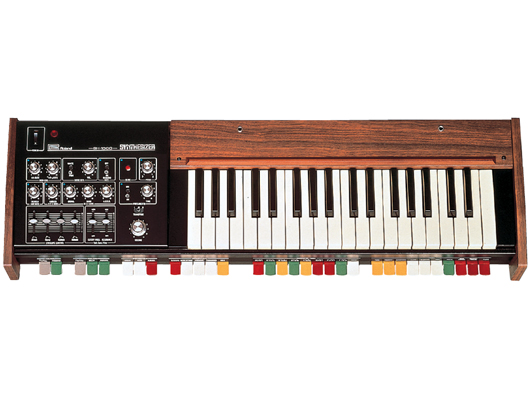
SH-1000
This 1VCO analogue synthesizer’s claim to fame was being the first mass-production synthesizer made in Japan. It had a selection of preset tones to choose from, and control functions to give the user freedom when producing sounds. It carried a price tag of ¥165,000 in Japan.
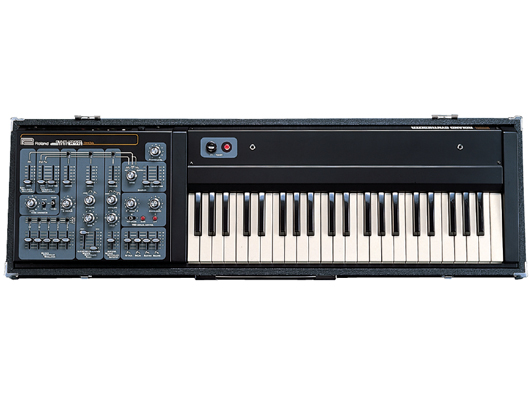
SH-3
A 1VCO analogue synthesizer making full use of control functions. There are two types - the SH-3 and SH-3A (photo) - which differ slightly in terms of appearance and internal construction. Additive synthesis oscillation creates a distinctive meaty sound.
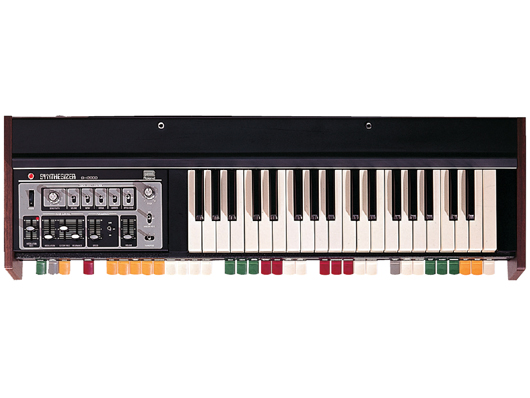
SH-2000
This preset-only analogue synthesizer (1VCO) is equipped with aftertouch. Although Roland analogue keyboard synthesizers have 1V/1oct VCOs, this one uses Hz/V.
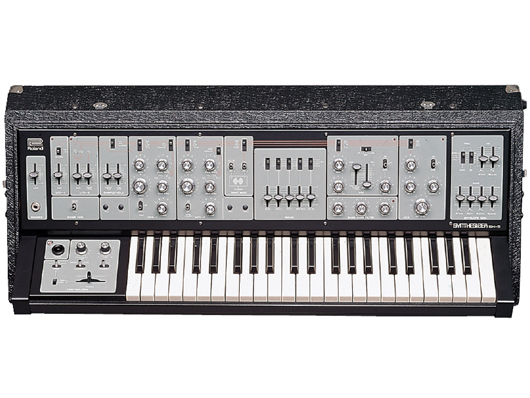
SH-5
Roland’s first 2VCO analog synthesizer. The huge one-piece case blew away keyboardists at the time. This synth was also the first to have pitch bender levers.
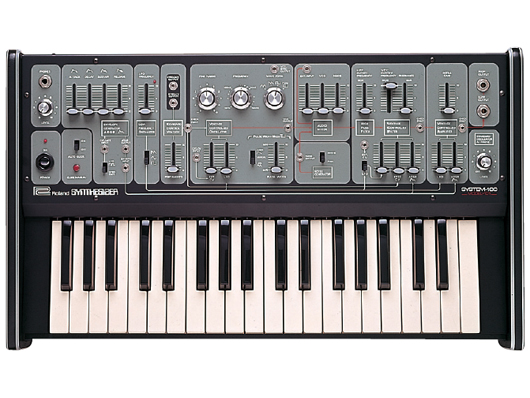
System-100
This system consisted of a small 2VCO synthesizer, expander, mixer, analogue sequencer, and a pair of speakers (photo shows the basic model 101 synth). It was possible to purchase each unit separately.
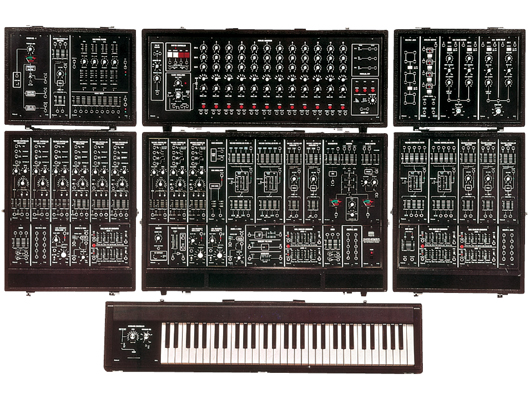
System-700
The first - and only - modular synth to be made in Japan. It included 9VCO, 4VCF, 5VCA, 4ENV, 3LFO, mixer, analogue sequencer, effects processors and more. The full system was priced at ¥2,650,000 in Japan.
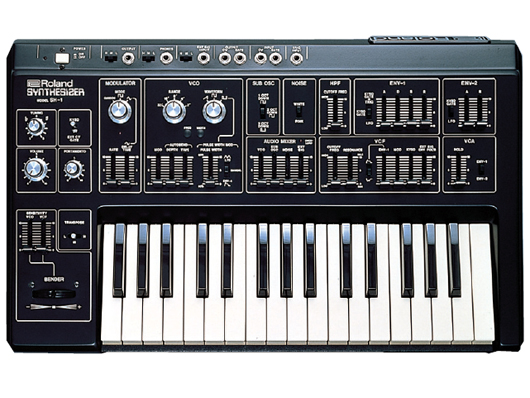
SH-1
A 1VCO analogue synthesizer with a basic circuit design derived from Roland’s System-700. In addition to being the first synth to incorporate a sub-oscillator, it was also the first to use a moulded plastic case.
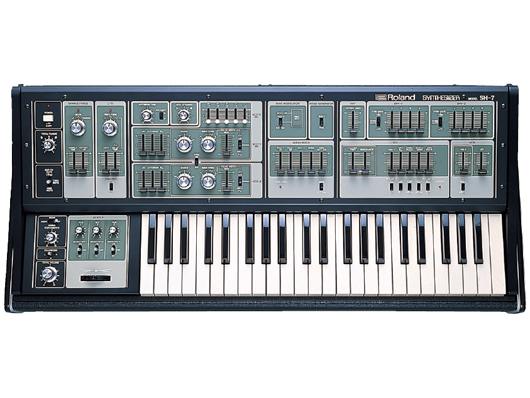
SH-7
This 2VCO analog synthesizer was released as the successor to the SH-5. The case was made somewhat smaller, and it could play two voices, taking advantage of the two VCOs.
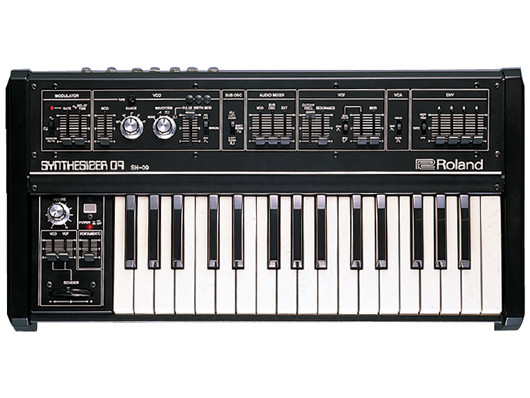
SH-09
A number of cost-cutting measures were applied to the SH-1. The result was this 1VCO analogue synthesizer, the first to sell for below ¥100,000 in Japan. This synth played a major role in popularising synthesizers in Japan.
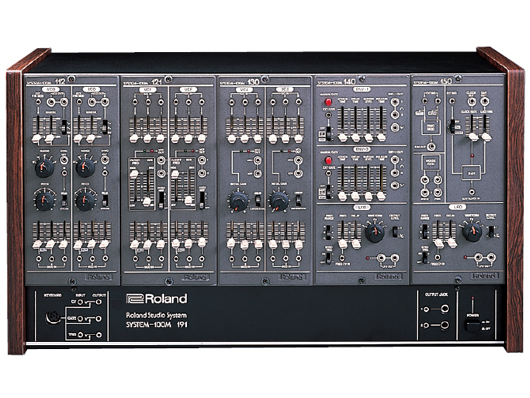
System-100M
A version of the System-700 aimed more at the general consumer. This compact modular synthesizer was made up of various modules and a rack with built-in power supply (32-key and 49-key keyboards were available).

SH-2
The meaty sound of 2VCO + 1 sub-oscillator made this analogue synthesizer quite popular. As with the SH-09, a price of under ¥100,000 in Japan propelled the SH-2’s popularity. It’s a coveted classic.
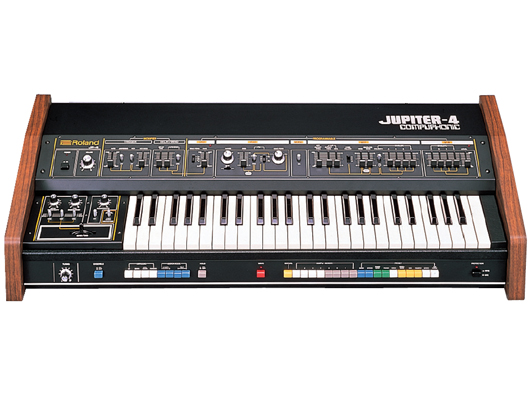
Jupiter-4
Roland’s first polyphonic analogue synthesizer (4 voices). The 4VCO sound in unison mode is superb, and it also has a built-in user sound memory function. The synth carried a price tag of ¥385,000 in Japan at the time.
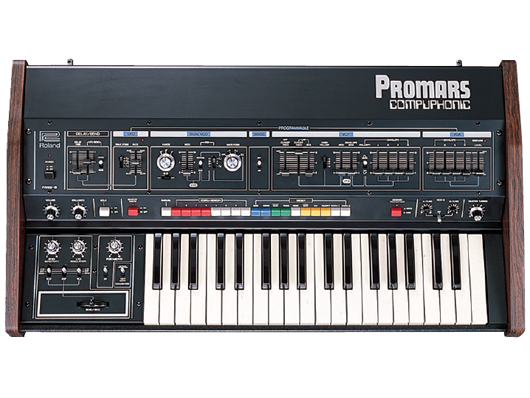
Promars
This is the monophonic version of the Jupiter-4 with 2 VCOs. As with the Jupiter-4, it had eight user sound memories and 10 preset sounds.
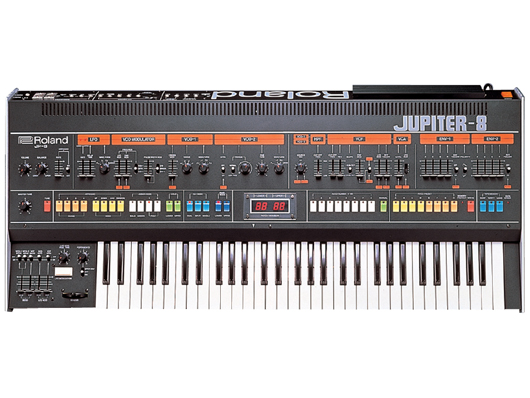
Jupiter-8
A deluxe 8-voice polyphonic analogue synthesizer with 64-sound memory. Its smorgasbord of features, including key split, patch preset, and auto arpeggio, earned this synth global praise and legendary status.
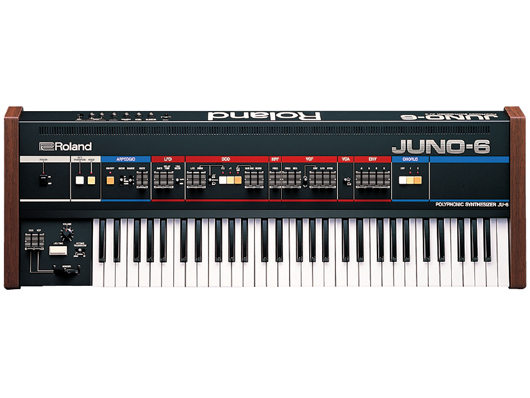
Juno-6
This 6-voice polyphonic analogue synthesizer used a DCO per voice to generate sound. Built-in chorus effects increased the range of sounds that could be produced. This synth also had a key transpose feature.
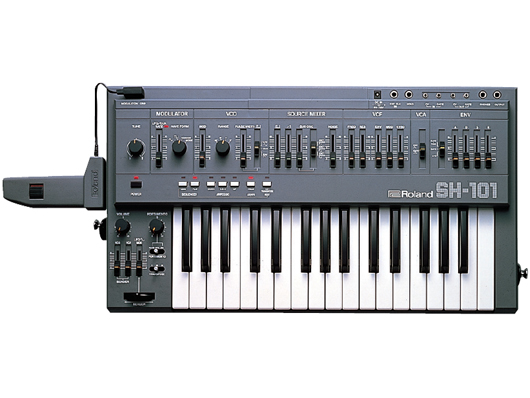
SH-101
A 1VCO analog mono synth available in three colour variations; modulation grip was also an option. The synth could run on batteries, allowing it to be slung on a shoulder strap and worn like a guitar.
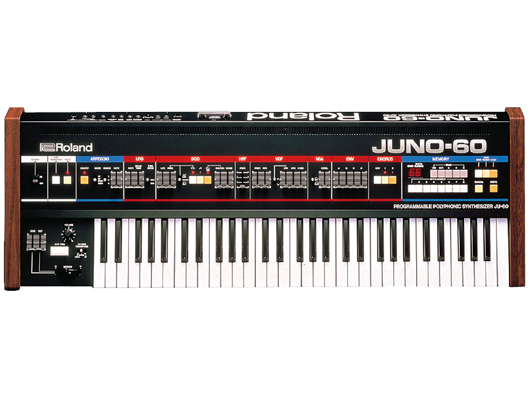
Juno-60
A Juno-6 with newly added memory functions for 56 sounds. Roland’s proprietary DCB interface standard was used for exchanging control information with external devices.
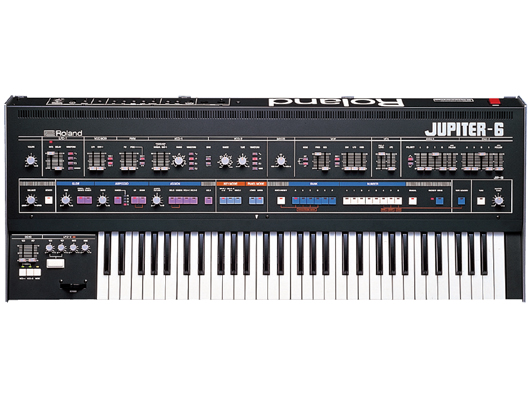
Jupiter-6
Scaling down the Jupiter-8 to 6-voice polyphony, coupled with creative tweaking by Roland’s engineers, allowed the Jupiter-6 to hit the market at half the price of the Jupiter-8. It also made news with its highly stable oscillator and MIDI terminal.
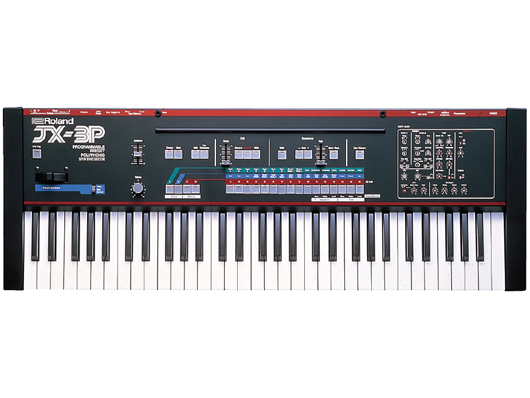
JX-3P
This MIDI-capable, 2DCO per voice, 6-voice polyphonic analogue synthesizer was released at the same time as the Jupiter-6. A PG-200 sound programmer that could be placed on the upper right on the panel was also available.
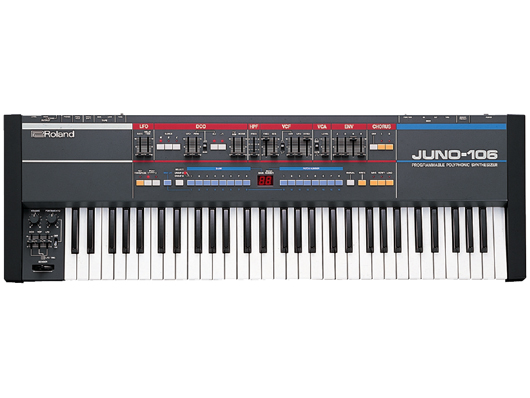
Juno-106
This 1DCO per voice, 6-voice polyphonic analogue synthesizer was the successor to the Juno-60. Equipped with 128-sound memory and MIDI, it would become a favourite of dance and techno artists. Recently, this synth has enjoyed a revival.
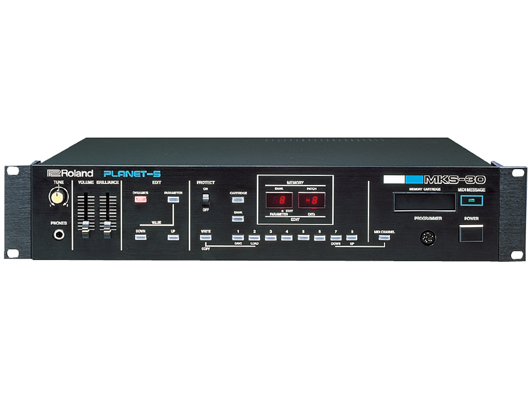
MKS-30
A 2U-rack version of the JX-3P. Although the JX-3P’s MIDI receive channel was fixed to channel 1, the MKS-30 has programmable channels. The PG-200 sound programmer for the JX-3P could also be used with this model.
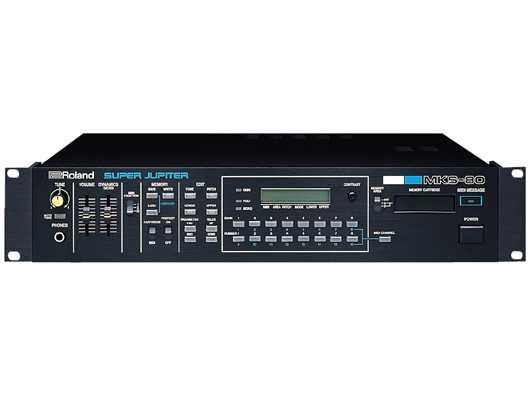
MKS-80
2U-rack size, 8-voice polyphonic version of the Jupiter-6. Nicknamed the Super Jupiter, it stood out for its ability to play a wide range of sounds, from musical instruments to special effects. The MPG-80 sound programmer was also available as an option.

JX-8P
An upgraded version of the JX-3P, the JX-8P analogue synthesizer featured 6-voice polyphony and two DCOs per voice. A separately sold PG-800 sound programmer was also available.

Juno-106S
This Juno was equipped with stereo speakers; other than that, the specs were completely identical to the Juno-106. The internal sound memory could be backed up to a cassette tape - a common feature in this time.
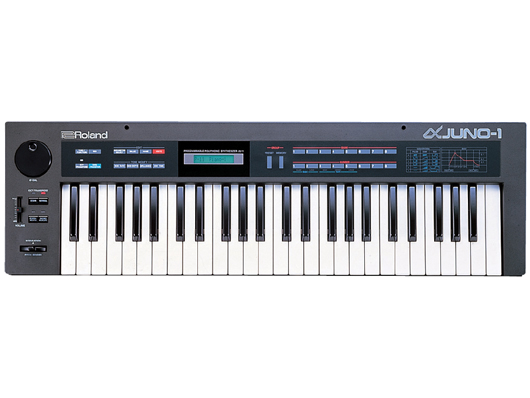
α Juno-1
Pronounced ‘alpha Juno-1’, this was a low-cost model in the Juno series. It had 49 keys and a specially designed sound-generator IC. Although it had 6-voice polyphony and 128 sound memory, it cost below ¥100,000 in Japan - quite an appealing combination.
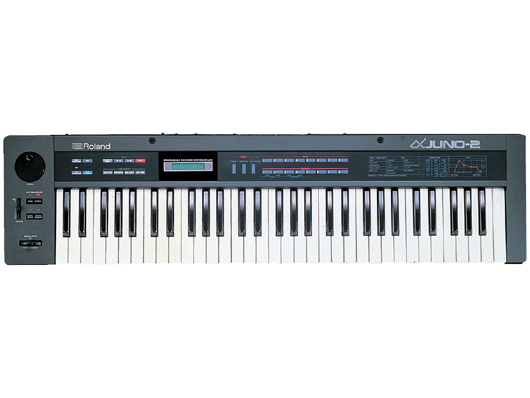
α Juno-2
A step up from the α Juno-1, the α Juno-2 had 61 keys. The Juno series was always popular for its string and bass sounds, and still is to this day. The PG-300 programmer, common to the α Juno-1 and -2, was also available.

JX-10
This 76-key, DCO-type analog synthesizer incorporated 2 JX-8P sound generators. With 12-voice polyphony, this synth was nicknamed the Super JX. The PG-800 sound programmer could be used with it.
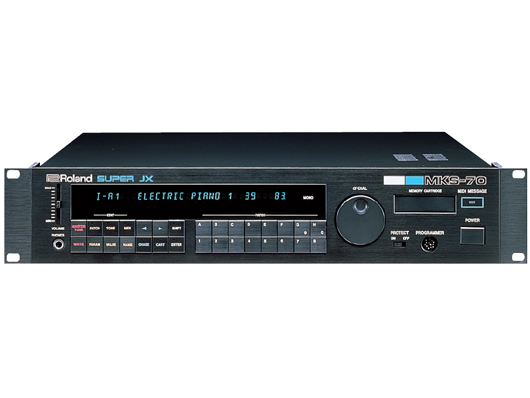
MKS-70
A rack version of the JX-10, this model could also use the same PG-800 sound programmer as the JX-10. Equipped with three different effects - portamento, delay, and chorus - it also had a memory cartridge slot.
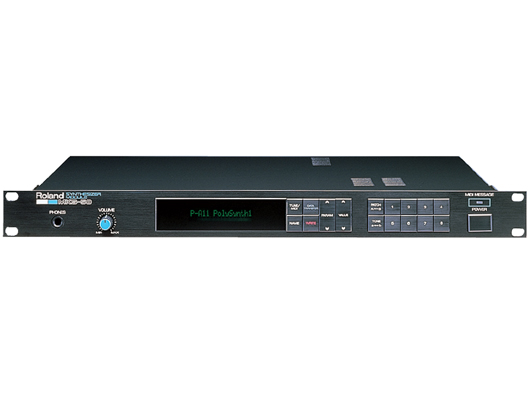
MKS-50
This rack-mounted model of the α Juno series made it possible to add portamento, detune and other parameters to patches. It was equipped with chord memory, and could also use the PG-300.
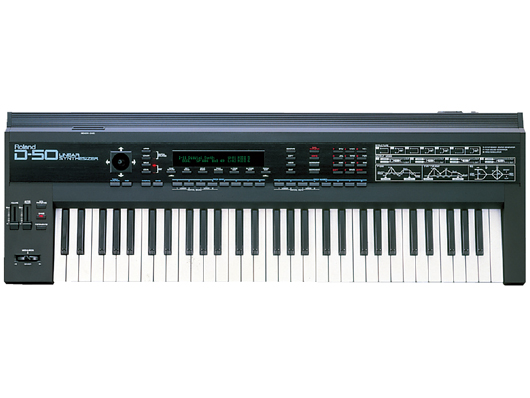
D-50
Equipped with the Linear Arithmetic (LA) synthesis, this was Roland’s first digital synthesizer. It also had a digital filter/effects processor. One of Roland’s best-selling models, this synthesizer also excelled at analogue-style sound.
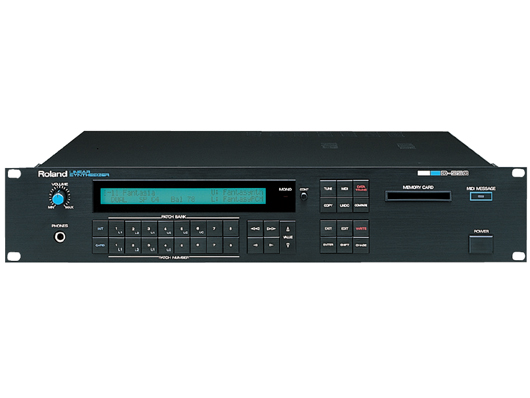
D-550
This rack-mounted version of the D-50 synth also had an LA sound generator. Creating sounds was made simple by using a PG-1000 external controller that enabled manipulation of edit parameters in real time.
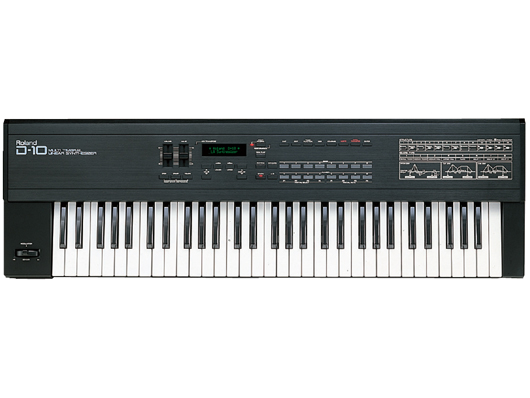
D-10
Although this digital synthesizer was reasonably priced, it borrowed the D-50’s LA sound generator and also had multitimbral capability and rhythm machine functions. It had seven types of digital reverbs, and the first built-in ROM player.

D-110
A standalone version of the D-10 sound generator, this sound module fits in a 1U rack. In addition to its main stereo output, it also had six individual outputs.
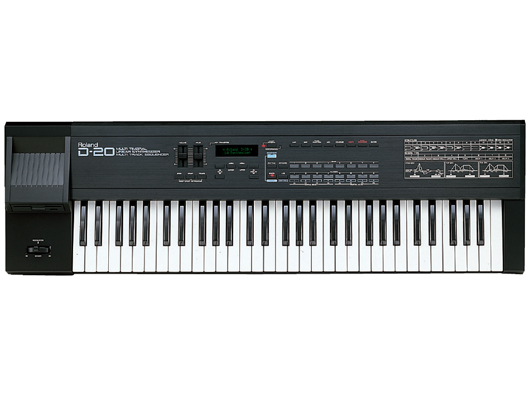
D-20
This model contained the same basic features of the D-10 but added a sequencer capable of 9-track multi-recording and a 3.5-inch floppy drive. The sequencer supported real time recording.

U-110
A simple playback sound module with a DC-PCM sound generator. In addition to a wide range of built-in musical instrument tones, it could hold up to four memory cards at once. By combining these, users could create custom sounds.
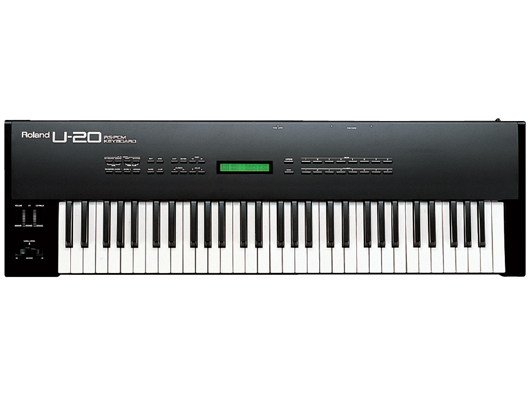
U-20
This keyboard used the RS-PCM sound generator, which retained compatibility with the U-110’s tone data. It was distinguished by a unique system of operation, with sound patches that managed tone data, and keyboard patches that managed MIDI data.
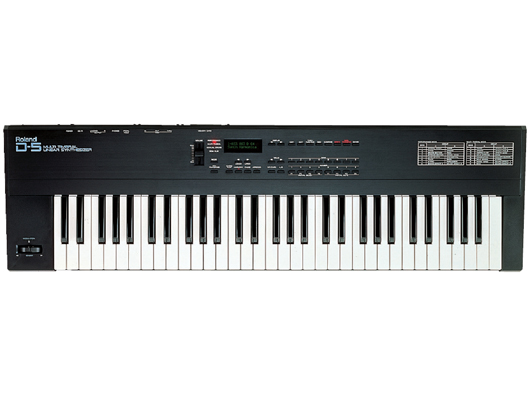
D-5
The greatest feature of the D series was an onboard LA sound generator. With a chase function and arpeggiator at a price of ¥99,800 in Japan, this synthesizer offered outstanding cost performance.
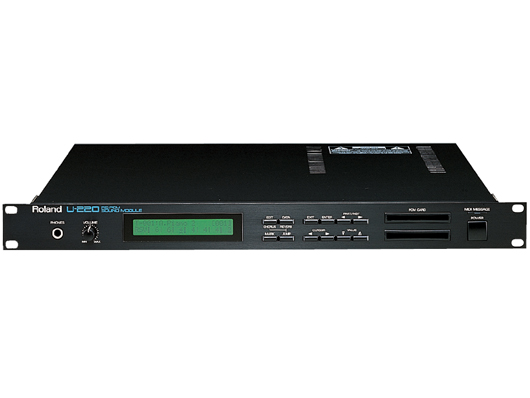
U-220
Employing the RS-PCM sound generator system, this upper model of the U-110 aimed at even higher sound quality. Preset tones were increased from 99 in the U-110 to 128 in U-220, and an onboard effects processor provided built-in chorus and reverb.

D-70
This synthesizer used Advanced LA synthesis, which is an evolved form of LA synthesis. It had a built-in DLM function that could generate a variety of wave data for synthesizing. This innovation created an infinite range of sound creation possibilities.
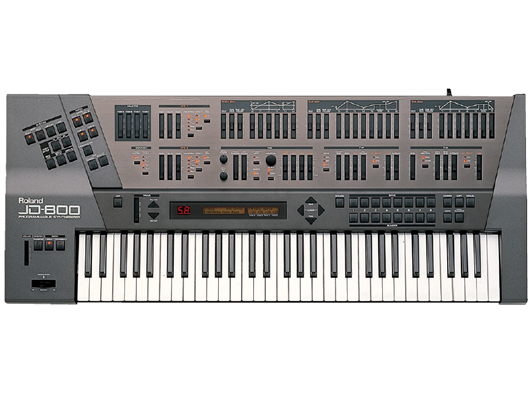
JD-800
This digital synth employed a large number of sliders on the panel to allow real-time control of all parameters with an analogue feel. Each Patch could consist of up to four Tones for creating fat sounds.

JX-1
While low priced, this playback keyboard had the ultimate selection of preset sounds, from acoustic instruments to analogue synthesizers. It also had an edit function with eight parameters.
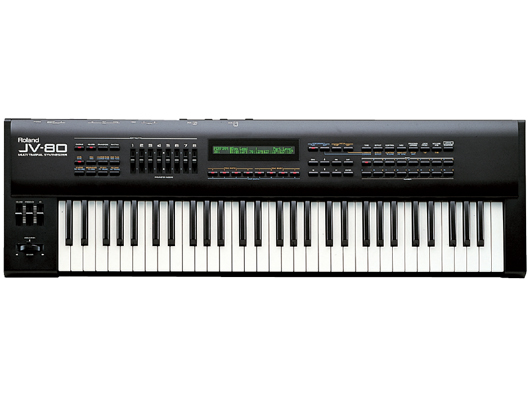
JV-80
With eight parameter sliders, this PCM synthesizer could be operated with an analogue feel. This was the first synth to be compatible with the best-selling SR-JV80-Series expansion board.
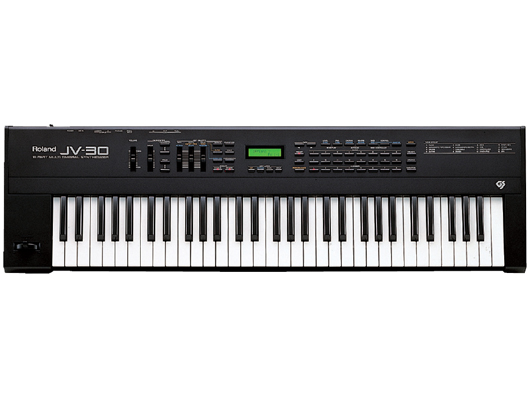
JV-30
The lower model of the JV-80, this 16-part multitimbral synthesizer captivated users with its 189 high-quality, built-in PCM tones and ease of operation. Editing filter, envelope generator and vibrato was possible.
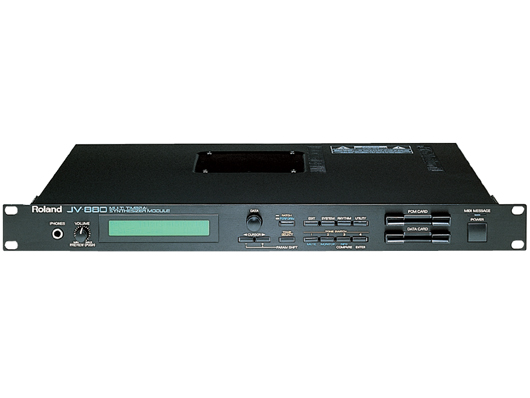
JV-880
This PCM sound module, with the high-quality sound and functionality of the JV-80, was made to fit into a compact 1U rack-size. In addition to four main and sub outputs, the module had a Preview function that allowed users to check tones without using any other equipment.
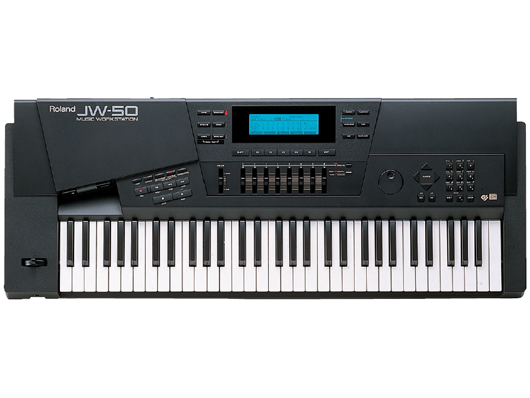
JW-50
This workstation had an onboard GS sound generator with a built-in 16-track sequencer. In addition to a backing function as a composition-support tool, the JW-50’s ease of editing tones made for an appealing instrument.
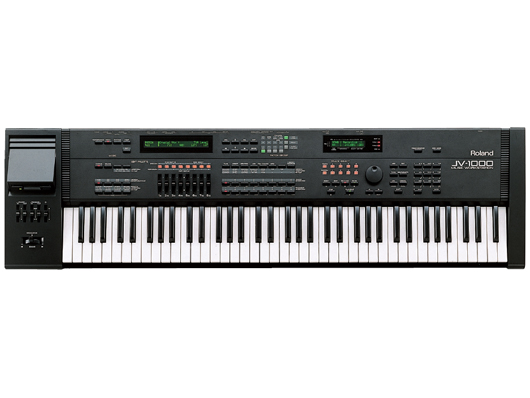
JV-1000
This workstation featured a refined version of the JV-80 sound generator, with a built-in MC-50MKII sequencer engine. Expansion boards made this workstation expandable up to 993 patches and 56 voices.
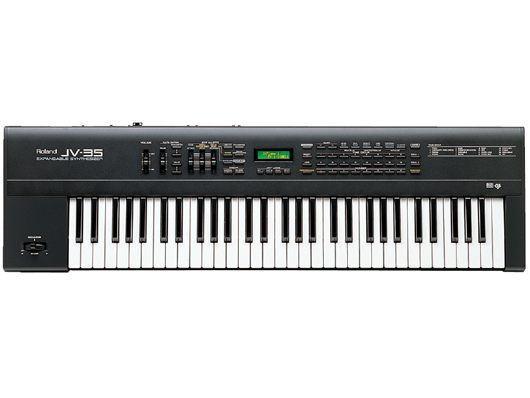
JV-35
This model offered superb cost performance. While low priced, it allowed expansion boards to be installed, adding extra sounds and voices. The separately sold VE-JV-1 provided the synth-engine equivalent of the JV-1000.
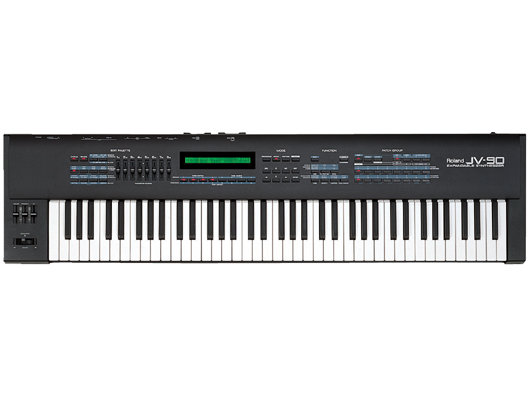
JV-90
The JV-1000 synthesizer with the sequencer removed, the JV-90 was based on the concept of expandability. Expansion boards could be used to expand the number of voices and sounds as needed.
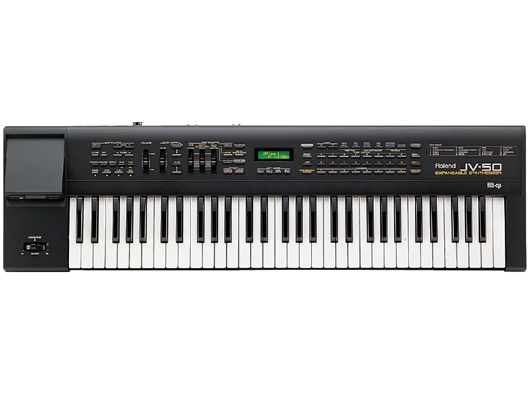
JV-50
This model featured the same functions as the JV-35, with a built-in SMF player. As with the JV-35/90, it was based on the JV-series concept of expandability, capable of up to 56 voices.
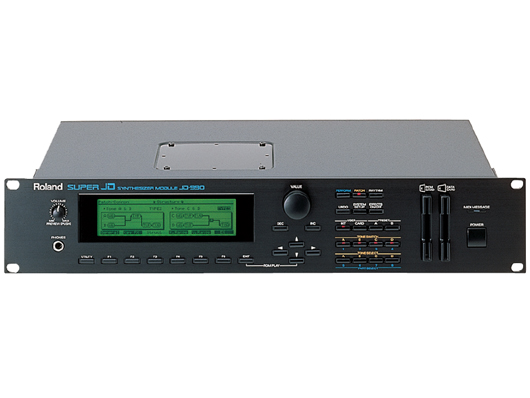
JD-990
This sound generator module achieved the operability of the JD-800 via a large-screen display. In addition to enabling ring modulation and oscillator sync, it was equipped with an FXM function and eight multi-effects processors.
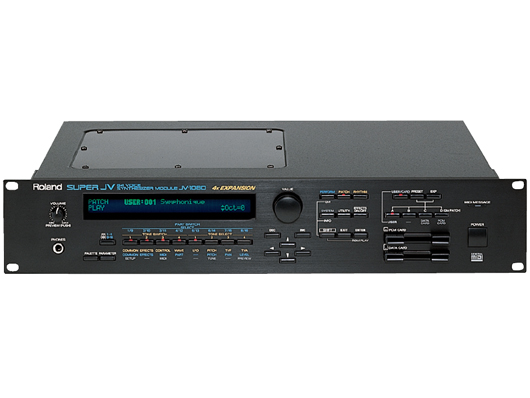
JV-1080
This synthesizer module featured 64 voices and 16-part multitimbral specs. Nicknamed the Super JV, the module could carry four wave expansion boards simultaneously, enabling up to 1,741 patches that spanned a wide range of music genres.
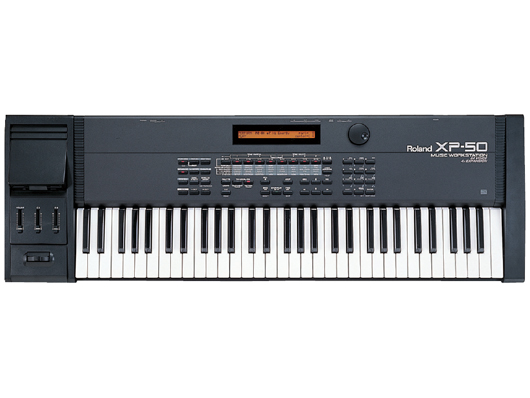
XP-50
This workstation featured the sound generator of the JV-1080, and a sequencer with loop recording and quick play. It also featured Realtime Phrase Sequence (RPS).
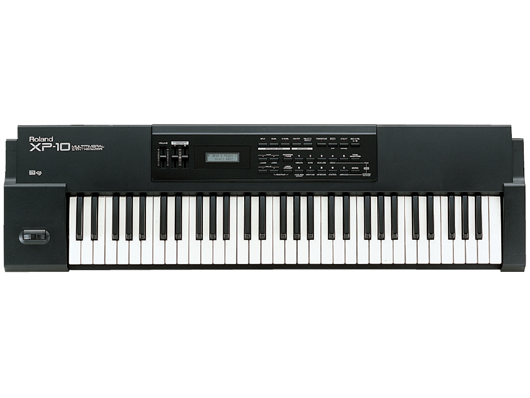
XP-10
This XP-series model was aimed at the more affordable price range. Equipped with a 16-part multitimbral GM/GS sound generator, it also incorporated a newly developed arpeggiator with 30 different styles, a Combination Palette, and more.
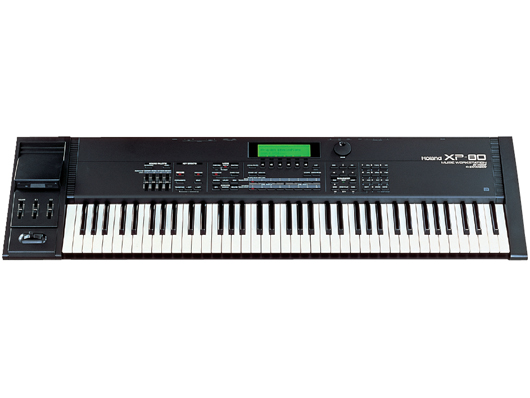
XP-80
The top model in the XP series, this synthesizer was based on the XP-50 with many refinements added on, plus 76 keys with a weighted action. The sequencer memory could hold about 60,000 notes, three times that of the XP-50.

JP-8000
This 8-voice synthesizer offered an impressive array of knobs and sliders to manipulate its analogue modelling synthesis engine. It had a built-in Motion Control function that allowed operations on the panel to be recorded and played back.
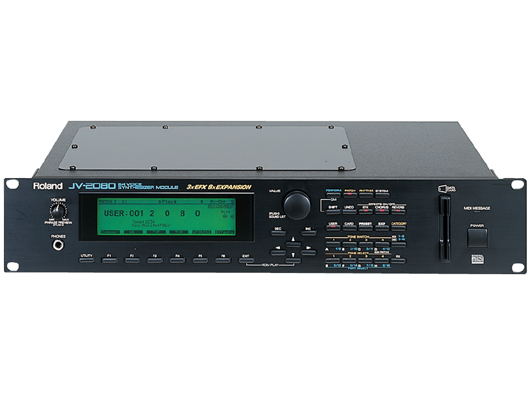
JV-2080
This sound module became so popular it was considered a world standard. With features such as 640 patches and 16 multitimbral parts, it represented the pinnacle in sample-playback synthesis at the time.
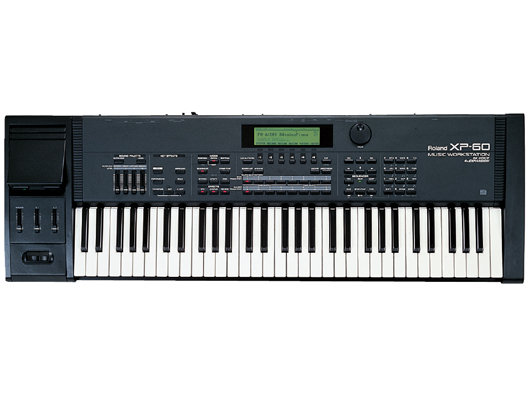
XP-60
This model compressed the features of the XP-80 into a compact 61-key body. All operations conformed to the XP-80. New expansion boards went on sale at the same time, increasing the appeal of this instrument even further.
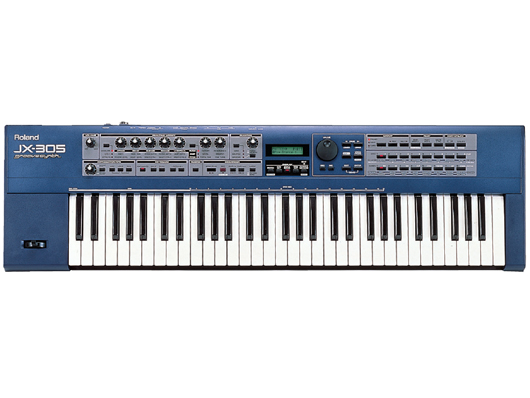
JX-305
The playability of a keyboard was added to the functionality of the MC-505 Groovebox, which was a hit product at the time. The main appeal of the model was easy operation with inspiring real-time operation.
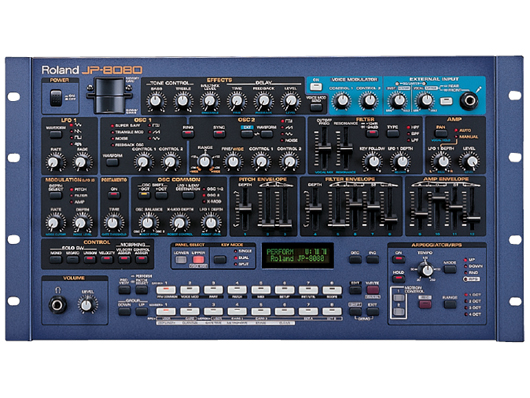
JP-8080
This rack version of the JP-8000 sound generator upped the power even more. Built-in Unison and Voice Modulator, an increase in polyphony from 8 to 10, and external audio input were some of the features that distinguished this module.
...
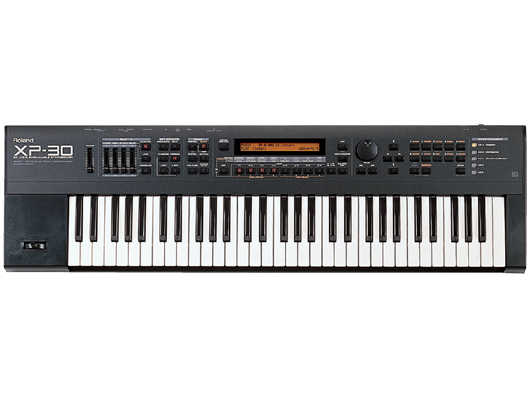
XP-30
The last model in the XP-Series. Although the sequencer was removed in order to lower the price, it boasted a full line-up of features, including 1,406 patches and an arpeggio function.
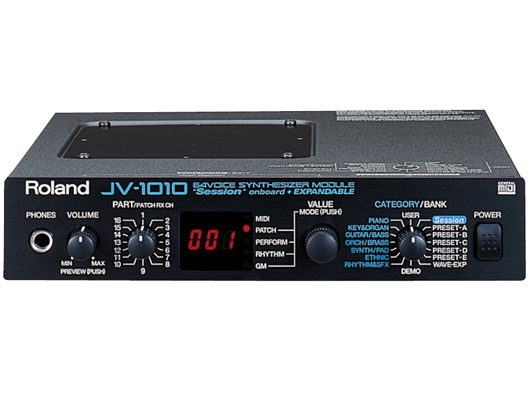
JV-1010
This compact half-rack module inherited the rich preset sounds of the JV-1080 and 2080. Able to hold one SR-JV80-Series expansion board, it could handle up to 1,151 patches.
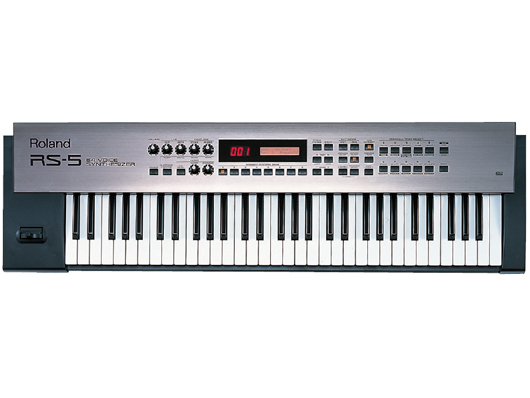
RS-5
While reasonably priced, this synthesizer contained the same high-quality sounds as the JV/XP/XV series. It was also easy to operate, with knob controls for LFO, filter and other parameters.
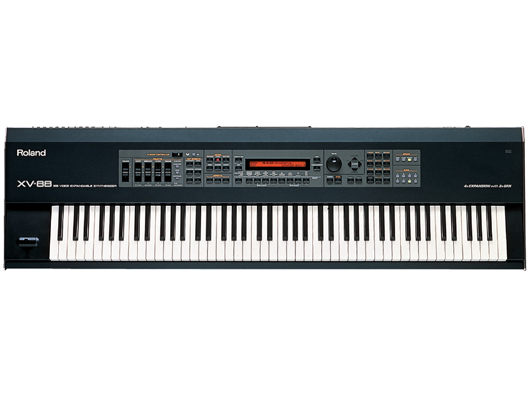
XV-88
The XV-88 was the full-sized keyboard model of the XV series. This 128-voice synthesizer was equipped with an 88-key, hammer-action keyboard. It could hold up to four expansion cards (two SRX series and two SR-JV80 series).
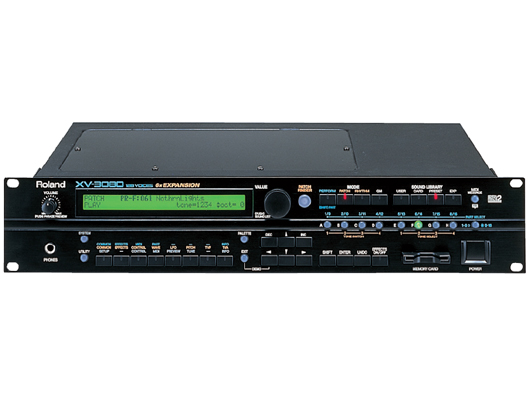
XV-3080
This 2U-rack synthesizer module had the same sound generator as the XV-88. It could hold up to two SRX-series and four SR-JV80-series sound expansion boards.
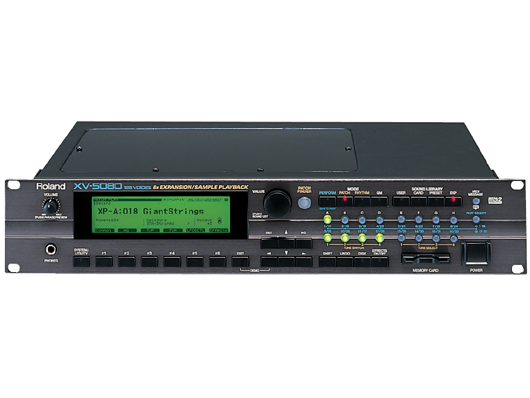
XV-5080
The top-of-the-line XV module. It had the highest-performance sound generator of its time, as well as a smorgasbord of attractive features, including Matrix Control and sample playback via SIMM.
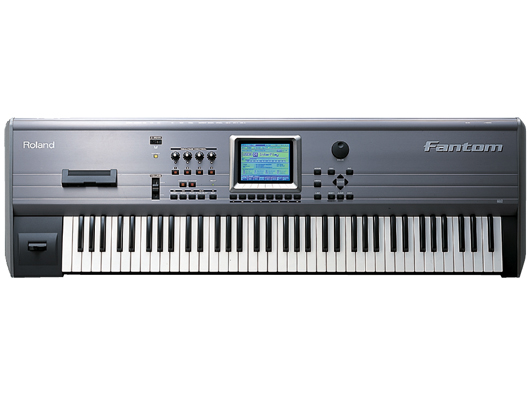
Fantom
A new breed of workstation with a large graphical LCD and centralised control of its numerous functions. This 76-key workstation featured professional XV-5080 quality sounds and a wide range of real-time performance functions.
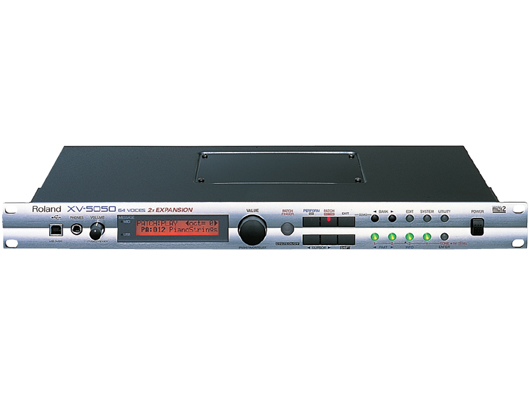
XV-5050
This 64-voice, 16-part sound module fitted the high sound quality of the XV-5080 into a 1U-rack size. Editing software was also included that allowed all parameters to be controlled via computer.
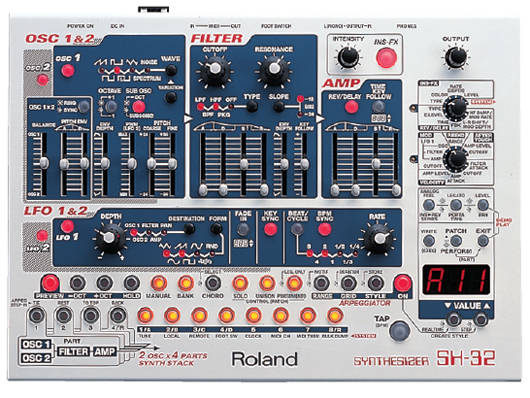
SH-32
After 20 years in retirement, the ‘SH’ prefix was revived. This ambitious product integrated the traditional panel interface to evoke images of the first SH-series, and offered a programmable arpeggiator and many other new features.
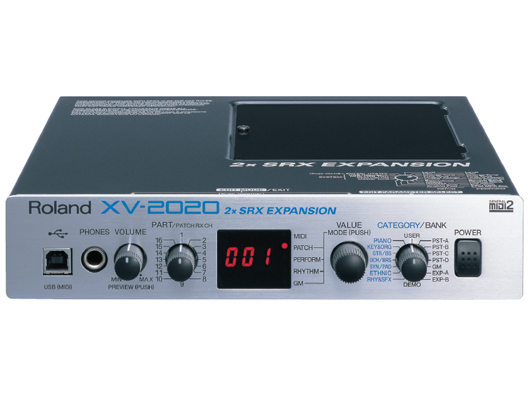
XV-2020
The XV-2020 synthesizer module put Roland’s acclaimed XV sounds in a half-rack unit with USB and GM2 compatibility. It offered two SRX expansion boards, 16 multitimbral parts, and three effects processors.
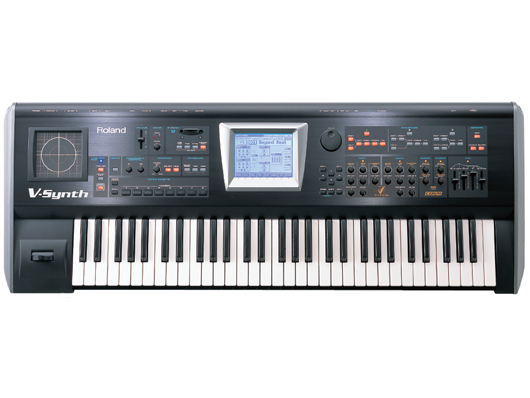
V-Synth
The V-Synth integrated Variphrase technology, allowing real-time control of waveform pitch, time, and formant for organic and animated sounds. It also offered analogue-modelling synthesis, COSM filtering, and the unique TimeTrip Pad.
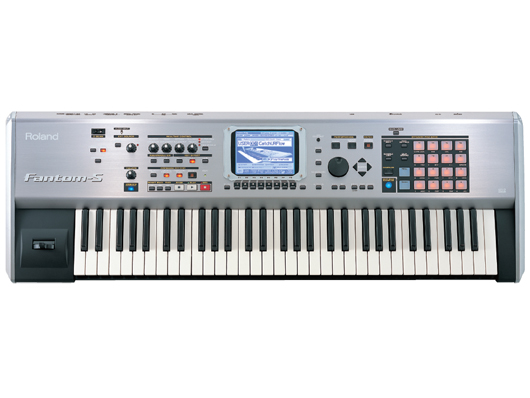
Fantom-S
This 61-note workstation keyboard offered seamless integration of audio and MIDI with advanced sampling features such as real-time timestretching and Skip Back Sampling, plus a Dynamic Pad Bank, mastering effects, and USB file exchange.
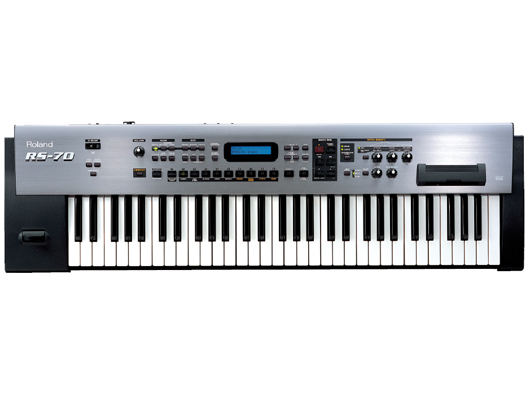
RS-70
With a fresh collection of quality sounds, a Loop Sequencer, and friendly Direct Access buttons for instantly selecting patches, the RS-70 introduced a new level of performance power for live or song production at an attractive price.
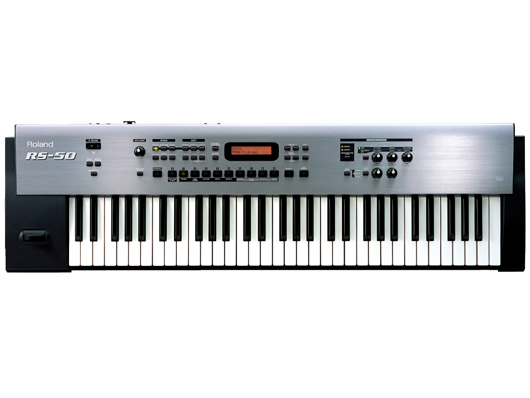
RS-50
A scaled-down version of the RS-70, this live-performance synthesizer provided great Roland sounds and performance-friendly features including Phrase/Arpeggio Generator and Multi Chord Memory to the entry-level market.
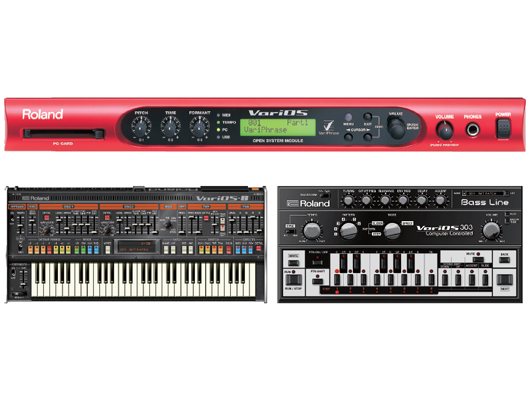
VariOS/VariOS-8/VariOS 303
Thanks to its open-ended hardware/software system, VariOS could emulate Roland’s most popular synths. VariOS 8 emulated Roland’s vintage Juno and Jupiter, and VariOS 303 emulated the classic TB-303, without draining the host computer’s CPU.
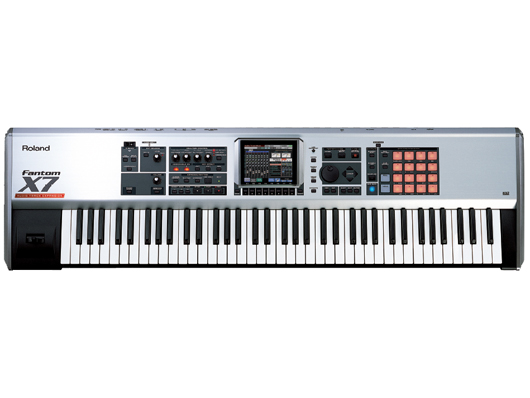
Fantom-X7
The Fantom-X Series were the first ‘Giga-Workstations’, providing nearly 1GB of wave memory when fully expanded with four SRX cards. They also offered 128-voice polyphony, eight stereo audio tracks, and a large colour LCD.
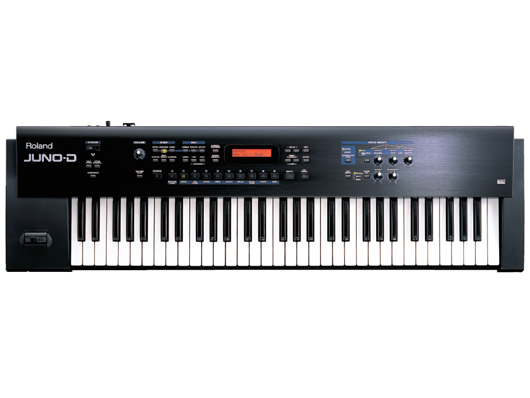
Juno-D
Budget priced yet big on features, the Juno-D offered 640 new patches, a world-class array of expressive multi-effects, real-time performance controllers, and tools for groove creation and composition.
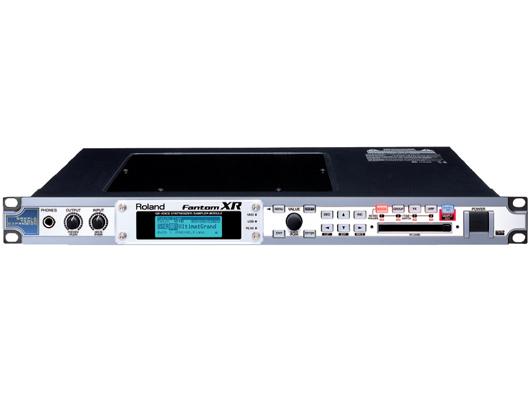
Fantom-XR
The stunning sound of a Fantom-X workstation in a 1U rack module, the Fantom-XR provided room for over 1GB of sounds when fully expanded with six SRX cards and DIMMs for user sampling.
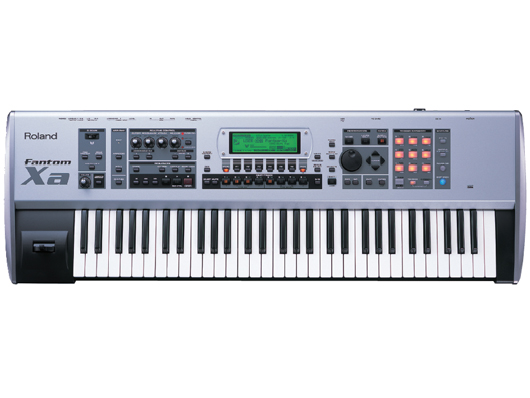
Fantom-Xa
For musicians who craved Fantom power, but wanted a more cost-effective way to Fantomize their rig, the Fantom-Xa was the answer - a multifaceted sampling workstation with a 16-track sequencer and affordable price tag.
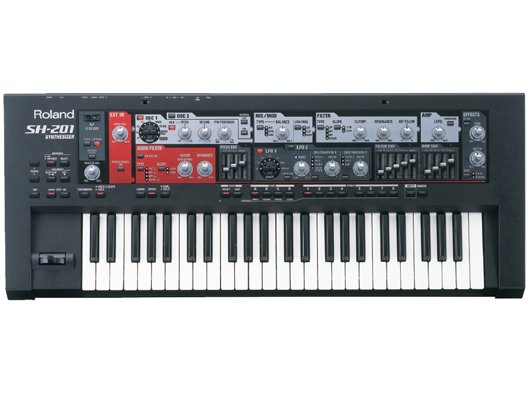
SH-201
This 49-key analogue-modelling synthesizer provides the famous Roland Super SAW waveform. It also has an external input for manipulating audio, a D Beam, and plentiful knobs and switches for real-time control.
REVIEW: Roland SH-2017
BUY: Roland SH-201: Production Room | GG-Digital
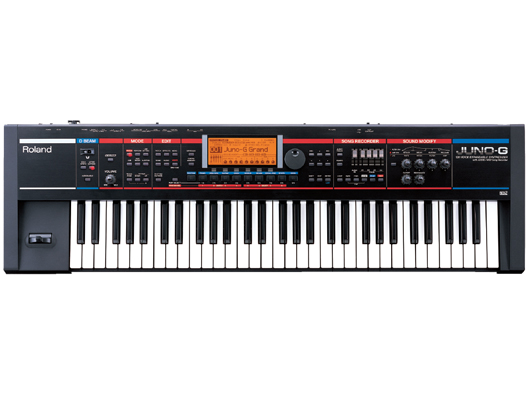
Juno-G
For songwriters and performers, the Juno-G synth offers a 16-part MIDI sequencer with four companion stereo audio tracks, plus a powerful Fantom-X-quality sound engine, 128-voice polyphony, and SRX expansion.
BUY: Roland Juno-G: Production Room | GG-Digital
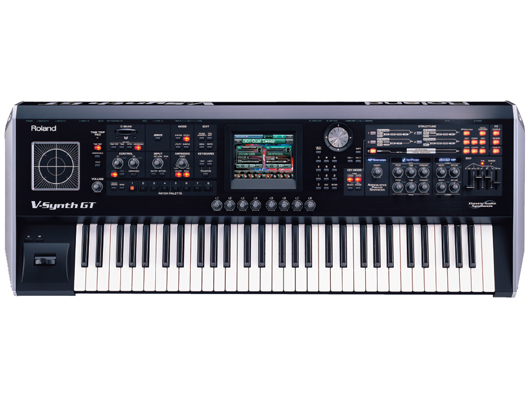
V-Synth GT
Onboard dual-core engine supercharges Elastic Audio Synthesis with revolutionary Articulative Phrase Synthesis, which models the performance behaviour and nuance of acoustic music instruments, plus Vocal Designer.
REVIEW: Roland V-Synth GT
BUY: Roland V-Synth GT: Andertons Music Co. | Thomann | Soundslive | Production Room | GG-Digital
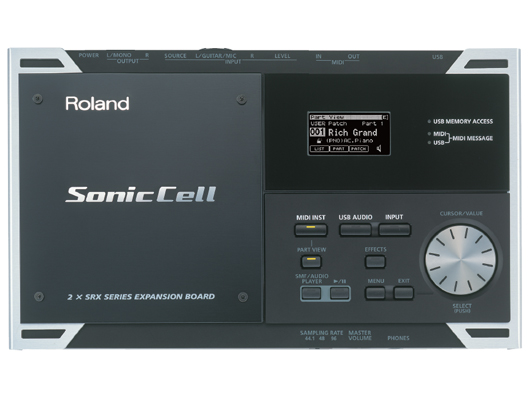
SonicCell
With its dual SRX expansion bay, built-in USB audio interface, and ability to play SMFs and WAV/AIFF/MP3 files, SonicCell puts the power and legendary sound quality of a Roland hardware synthesizer on the desktop.
REVIEW: Roland SonicCell
BUY: Roland SonicCell: Andertons Music Co. | Thomann | Soundslive | Production Room | GG-Digital
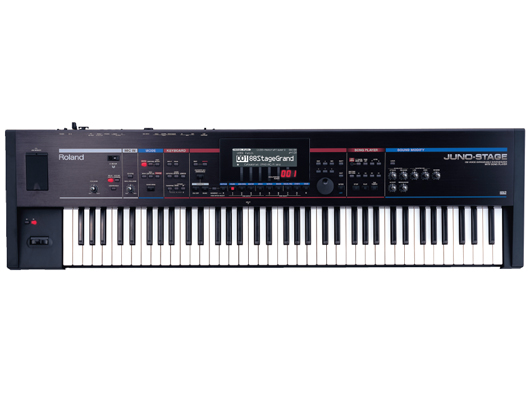
Juno-Stage
Decked out with an extra-large display, USB backing-track functionality, a Click output for drummers, performance knobs, hands-free patch select, master MIDI control and more, the 76-key Juno-Stage offers onstage power at a great price.
REVIEW: Roland Juno-Stage
BUY: Roland Juno-Stage: Andertons Music Co. | Thomann | Soundslive | Production Room | GG-Digital
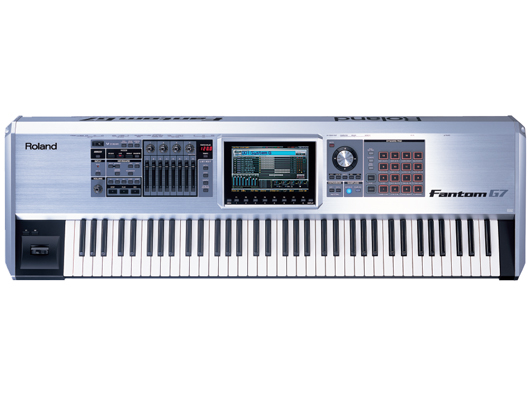
Fantom-G7
The Fantom-G series redefines the boundaries of playability and creativity with its advanced sound engine, revolutionary ARX SuperNATURAL expansion bay, large-sized colour LCD, powerful 152-track audio/MIDI sequencer and more.
REVIEW: Roland Fantom-G6
BUY: Roland Fantom-G6: Andertons Music Co. | Thomann | Soundslive | Production Room | GG-Digital
BUY: Roland Fantom-G7: Production Room | GG-Digital
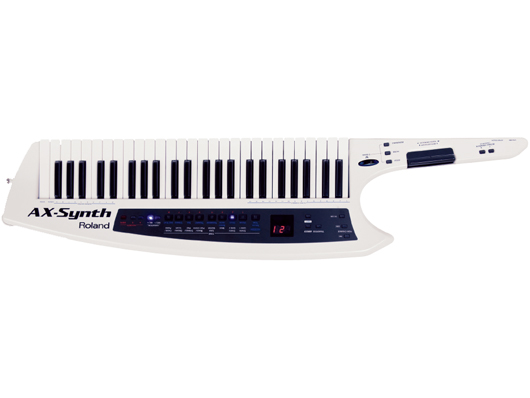
AX-Synth
The battery-powered AX-Synth is an eye-catching 49-key remote keyboard with a high-quality sound generator onboard. It’s self-contained and equipped with powerful, solo-oriented sounds from Roland’s latest generation of synths.
REVIEW: Roland AX-Synth
BUY: Roland AX-Synth: Andertons Music Co. | Thomann | Soundslive | Production Room | GG-Digital

Juno-Di
A travelling musician’s dream, the Juno-Di is lightweight, can run on batteries, and is easy to use. It’s packed with 1,000+ great sounds, has a friendly control panel for easy editing, and a Song Player for larger-than-life performances.
REVIEW: Roland Juno-Di
BUY: Roland Juno-Di: Andertons Music Co. | Thomann | Soundslive | Production Room | GG-Digital

V-Combo VR-700
With a legendary Virtual Tone Wheel organ and dedicated harmonic bars onboard, plus banks of essential ensemble sounds, the V-Combo melds an entire rig into one convenient instrument for easy transport and fast setup.
BUY: Roland V-Combo VR-700: Andertons Music Co. | Thomann | Soundslive | Production Room | GG-Digital
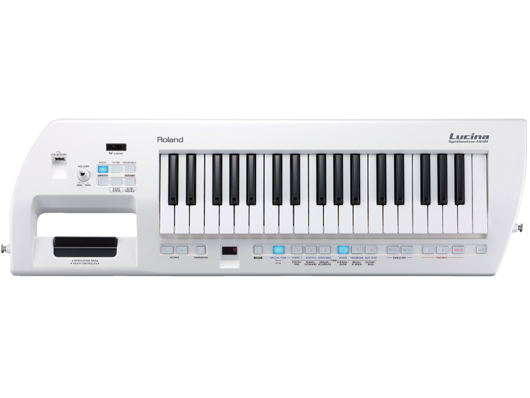
Lucina AX-09
This 37-key ultra-light synth is designed to fit all musicians - even kids. It’s loaded with 150 excellent sounds, all easily selectable with the onboard category buttons, and features a USB Audio Player function for jam-along fun.
REVIEW: Roland Lucina AX-09
BUY: Roland Lucina AX-09: Andertons Music Co. | Thomann | Soundslive | Production Room | GG-Digital
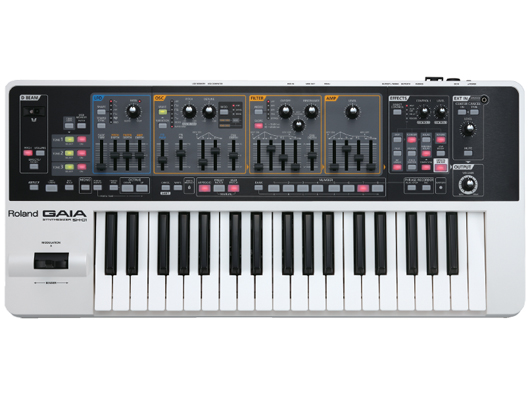
Gaia SH-01
Affordable yet powerful, the Gaia SH-01 offers high-performance value with old-school charm. The triple-stacked engine provides massive virtual-analogue synthesis under the control of hands-on knobs, sliders, and buttons.
REVIEW: Roland Gaia SH-01
BUY: Roland Gaia SH-01: Andertons Music Co. | Thomann | Soundslive | Production Room | GG-Digital
Liked this? Now read: The 10 greatest synthesizers of all time
Connect with MusicRadar: via Twitter, Facebook and YouTube
Get MusicRadar straight to your inbox: Sign up for the free weekly newsletter
“Excels at unique modulated timbres, atonal drones and microtonal sequences that reinvent themselves each time you dare to touch the synth”: Soma Laboratories Lyra-4 review
e-instruments’ Slower is the laidback software instrument that could put your music on the fast track to success
“Excels at unique modulated timbres, atonal drones and microtonal sequences that reinvent themselves each time you dare to touch the synth”: Soma Laboratories Lyra-4 review
e-instruments’ Slower is the laidback software instrument that could put your music on the fast track to success



![PRS Archon Classic and Mark Tremonti MT 15 v2: the newly redesigned tube amps offer a host of new features and tones, with the Alter Bridge guitarist's new lunchbox head [right] featuring the Overdrive channel from his MT 100 head, and there's a half-power switch, too.](https://cdn.mos.cms.futurecdn.net/FD37q5pRLCQDhCpT8y94Zi.jpg)





